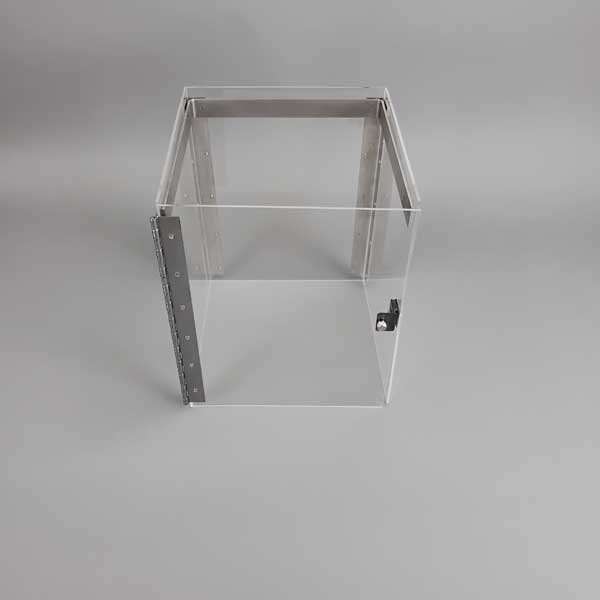SpinVessel® ACCESSORY, Enclosure, for 6L SpinVessel®, Polycarbonate, with Stainless Steel hinges and Corner Supports
VP 418E-6L
SpinVessel® ACCESSORY, Enclosure, 6L
| Working Volume | 6L |
|---|---|
| Material | Acrylic |
What Makes SpinVessels® Work?
Pulsed Radial Flow™
Our unique method of mixing and suspending particulates is predicated on Pulsed Radial Flow. When a circular flowing current of liquid is pushed along by side fins in the bottom of a spinning vessel and then the spin direction is rapidly reversed, when that liquid current strikes the reversing side fin or projection it re-directs the circular liquid flow up the side wall of the vessel as a pulse. For each side fin or projection, there is one pulse. The flow path starts at the bottom of the vessel, then moves up the side wall and when it reaches the top of the vessel it flows down the center of the vessel to the bottom and the circle begins again when the SpinVessel® rotation is reserved again.
Our method of mixing is achieved by integrating radially oriented side fins and projections in a vessel and pairing the vessel to a motorized device that alternatively reverses the vessel’s spin rotation after a defined number of revolutions and various speed settings. The placement of the side fins and projections is designed to avoid contacting pipet tips on robotic liquid handlers.
Motor Settings
The optimal SpinVessel® motor settings are dependent upon the circumference of the SpinVessel®, and your application’s specific factors which need to be empirically determined for each application. The smaller the SpinVessel® circumference, the speed in RPM needs to be faster and visa versa. This phenomenon is true because the pulsed Radial Flow strength is generated by the linear speed of the circulating liquid current striking the reversing side fins at the circumference of the SpinVessel®. The faster the fluid current is moving the stronger the pulse. See page 501 of our SLAS Technology paper for a full discussion of this phenomenon.
Other Factors
Other factors to be considered are the density of the particulates, their size, fragility, and shape, as well as the volume and viscosity of the carrier liquid. Start with (100 RPM) and 4 rotations before reversing direction, then work up or down to the appropriate RPMs and number of rotations for your particulate’s density, fragility, and solution viscosity.
It is always a good idea to practice with water in the SpinVessel® to determine a safe RPM, number of rotations, pause and ramp numbers before using expensive reagents.
Advantages of the SpinVessel®
- Gently mix fragile cells and particulates because there are no moving parts inside the SpinVessel® which cause shear forces.
- HEK, CHO cells, and Dextran Microcarrier Beads can be continuously kept in uniform suspension for 8 hours without loss of viability or integrity.
- The uniformity of aliquots collected at various vertical depths and horizontally across the SpinVessels demonstrated that cells, magnetic beads, and silica beads were uniformly suspended throughout the height and breadth of the SpinVessels.
- The uniformity of samples was also consistent from the beginning to the end of the aliquoting procedure.
- Aliquoting into microplates with robotic pipettors can be done without stopping the mixing action.
- Very small dead volumes are accommodated for expensive reagents.
- Mates with both robotic liquid handlers and robotic reagent dispensers
- Available in multiple sizes from 25 ml to 6 liters,
- Tandem versions are available in 2, 4, and 8 unit models
- Manual and computer control available.
















